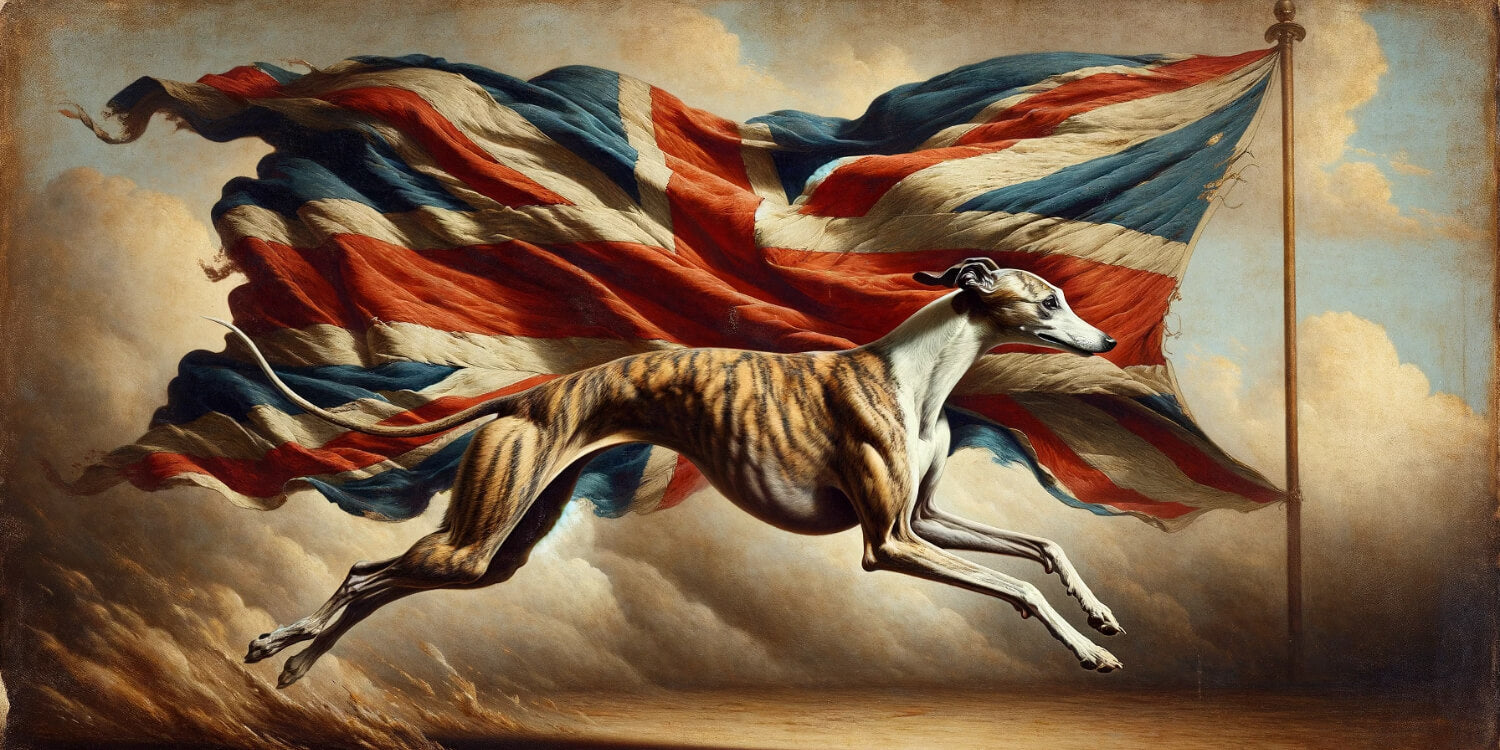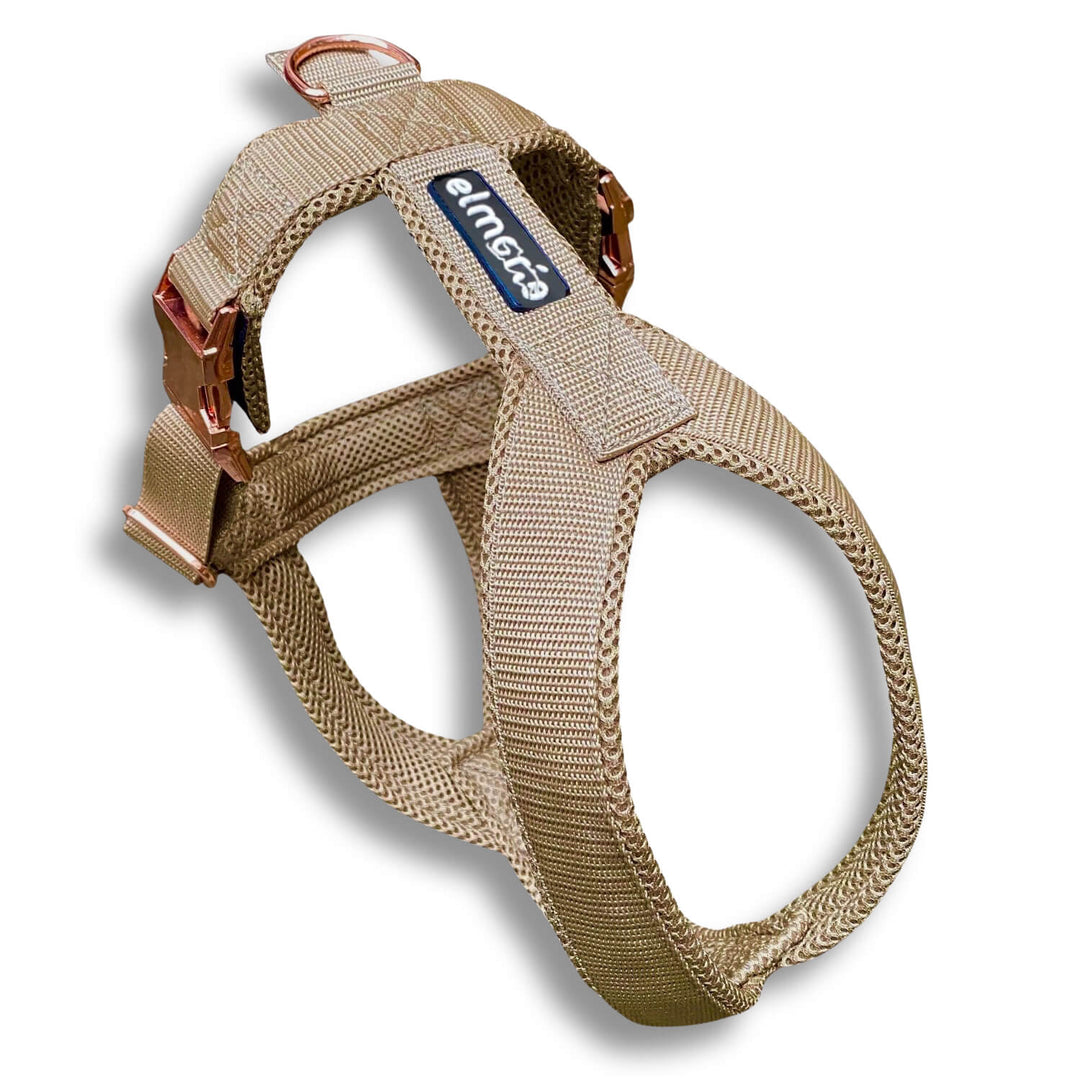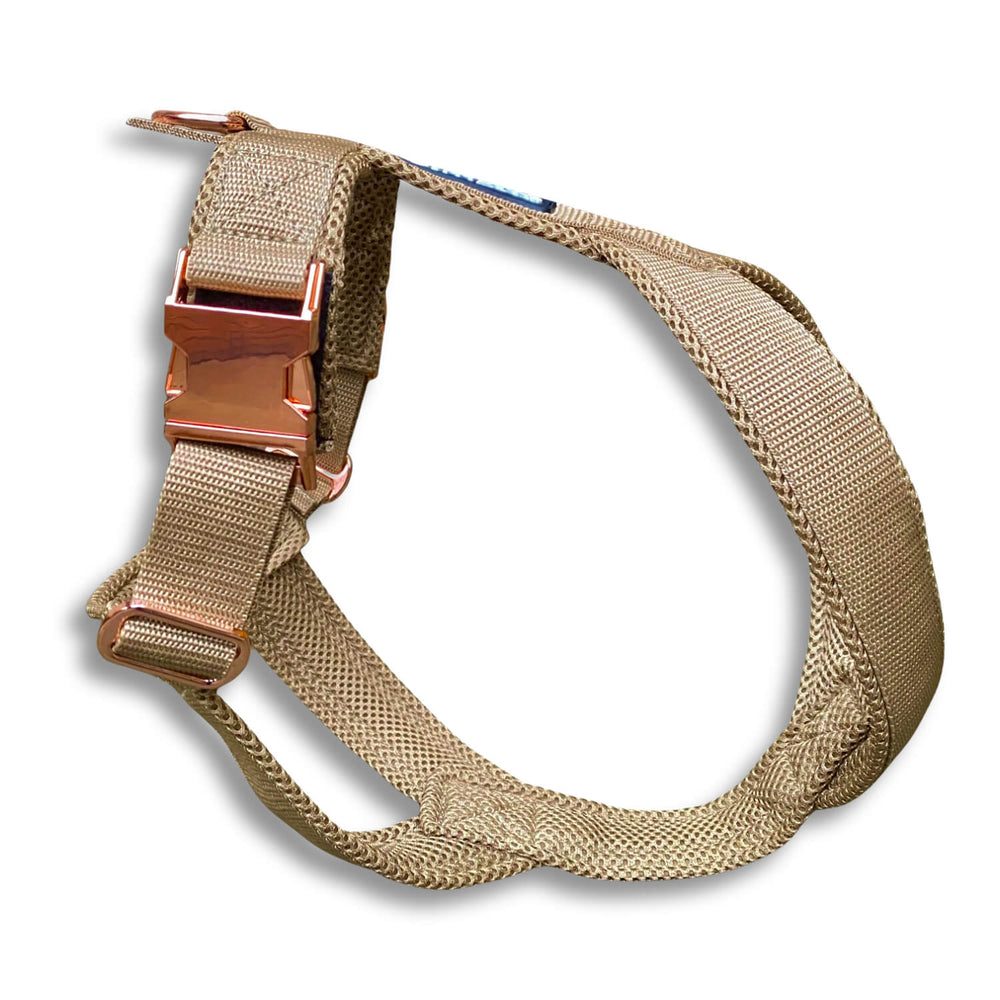Echoes of the Past: The History and Naming of the Whippet

The Whippet, a true star in the world of sighthounds, impresses with its elegant appearance and impressive speed . Originally bred for hunting, it has evolved into a popular family dog. With its lean build and athletic prowess, it is a real eye-catcher on the green. But in its home environment, it surprises with its calm, loving nature . This combination of grace and strength of character makes it an ideal companion for sports enthusiasts and families. Its versatility and adaptability have earned it worldwide recognition.
After this look at the Whippet's popularity today, we now delve into the fascinating history of this breed and explore the Whippet's historical roots.
Origin of the Whippet in England
The history of the Whippet is closely intertwined with English culture. As one of the most elegant and fastest dog breeds, the Whippet originated in England. The development of this breed not only reflects a deep connection to English tradition but also demonstrates the close relationship between humans and dogs throughout history.
Medieval mentions in England
In medieval England, dogs similar to today's Whippet were already well-known and popular. They were distinguished by several distinctive features:
-
Small and fast hunting dogs : They were often used to hunt small game such as rabbits and hares. Their speed and agility made them effective hunters.
-
Popular across social classes : These dogs were popular not only among the nobility but also among the rural population. This demonstrates their widespread acceptance across various social classes. It's not for nothing that the Whippet was also called the common man's racehorse.
-
Early cultural role : Their mention in literary and artistic works underscores their importance in medieval English society. Thus, the Whippet was valued not only as a working animal but also as part of the cultural identity.

Development of the breed in the Midlands and Northern England
The actual development of the Whippet as we know it today took place mainly in the heart of England in the Midlands and the North of England:
-
Industrial Revolution : With the advent of the Industrial Revolution and increasing urbanization, people's living conditions and needs changed, affecting dog breeding. This greatly fueled the popularity of the Whippet.
-
Adaptation to urban environments : Its size and speed made it ideal for hunting in smaller, more urban areas, as cities and their waste attracted more and more wildlife.
-
Working-class breeders : Miners and workers, in particular, discovered their passion for breeding this breed. They emphasized speed and agility to optimize the animals for both hunting and sporting competitions.

Transition from hunting to racing purposes
Over time, the role of the Whippet changed from a hunting dog to a racing dog:
-
From hunter to racing dog : The Whippet's ability to reach high speeds made it ideal for dog racing, which provided additional betting income for the working class.
-
Popularity of dog sports : Whippet racing became particularly popular among the working class. It became a symbol of sporting competition and community spirit.
-
Selective breeding : To meet the demands of racing, breeders began to breed specifically for traits such as speed and endurance.
The Whippet is thus more than just a dog—it is a symbol of the adaptability and versatility that dog breeds can demonstrate over time. Its evolution from a medieval hunting dog to a modern racing and family pet demonstrates how much our relationship with dogs has changed over the centuries. Stay tuned to learn more about this fascinating breed and its unique history! Of course, from an animal welfare perspective, this is no longer in keeping with the spirit of the times, but it still deserves mention because it is part of the history and identity of these wonderful dogs.
The naming of the Whippet

The origin & meaning of the word "Whippet"
The origin of the name "Whippet" is an interesting piece of dog history that continues to spark debate and speculation to this day. There are two main theories regarding the origin of the name:
-
Whip hypothesis : Some sources suggest that the name comes from the English word "whip," meaning "whip." This may refer to the breed's slender, whip-like build, particularly its thin, swift tail.
-
The "whappet" hypothesis : Another theory is that the name is derived from "whappet," an old English term used in the English language from about 450 to 1150 AD, meaning a small dog. This name may allude to the Whippet's size and lively nature. However, there is no clear historical evidence to establish a direct connection.
In general, many English words and racial names have their roots in older language forms or dialects, but the exact origin of such terms can often only be determined through detailed linguistic and historical research. It is likely even a combination of both assumptions.
Historical use of the name for small, fast dogs
Historically, the term “Whippet” was initially used generically to refer to various types of small, fast dogs:
-
Wide usage : In the 17th and 18th centuries, “Whippet” referred to various dog breeds known for their speed and agility.
-
Popularity in hunting : These dogs, commonly called “Whippets,” were often used for hunting small animals, where their speed was particularly advantageous.
The change of the name and its current meaning
Over time, the name “Whippet” evolved from a general term to a specific breed name:
-
Recognition as a separate breed : In the late 19th century, the Whippet was officially recognized as a separate breed by the British Kennel Club , primarily due to the popularity of dog racing.
-
Today's identity : Today, the name "Whippet" clearly stands for the well-known dog breed, which is famous for its elegant appearance, its exceptional speed and its friendly nature.
The history of the name "Whippet" reflects the breed's evolution from a general category of small, fast dogs to a highly valued and clearly defined breed. Both the theory linking the name to "whip" and the suggestion that it derives from "whappet" emphasize the Whippet's defining characteristics: its speed, agility, and compact size. Exploring the name "Whippet" evokes a certain nostalgia, reminding us of the long and varied history of this extraordinary breed, deeply rooted in the past and known only to the Whippet itself.

















Leave a comment